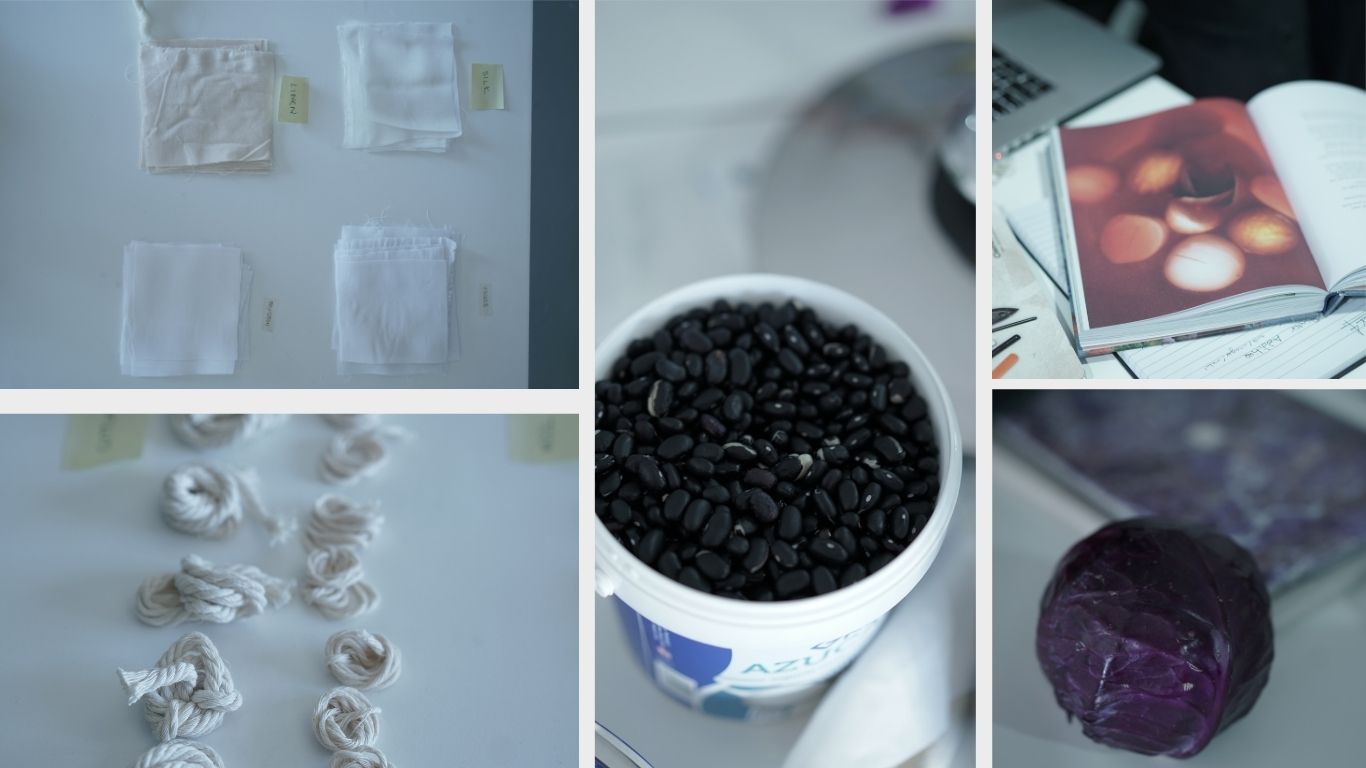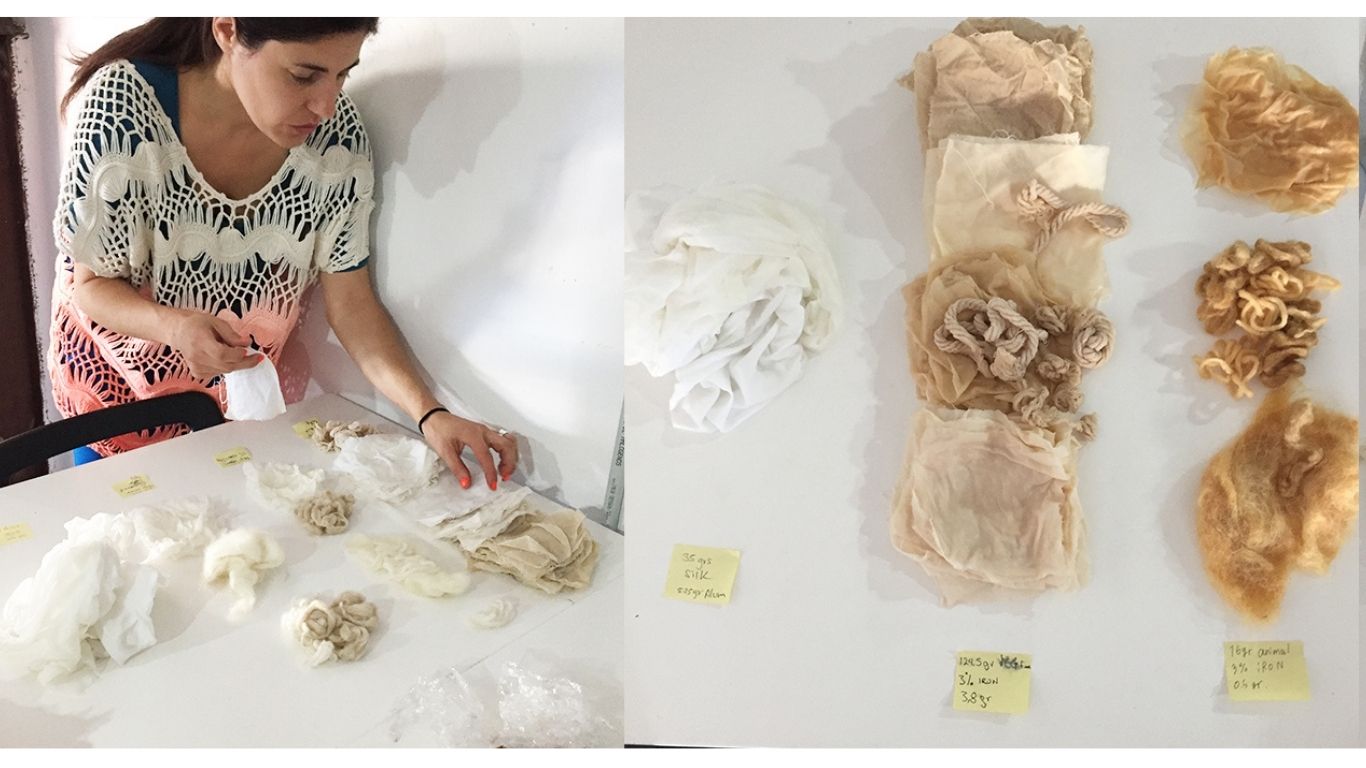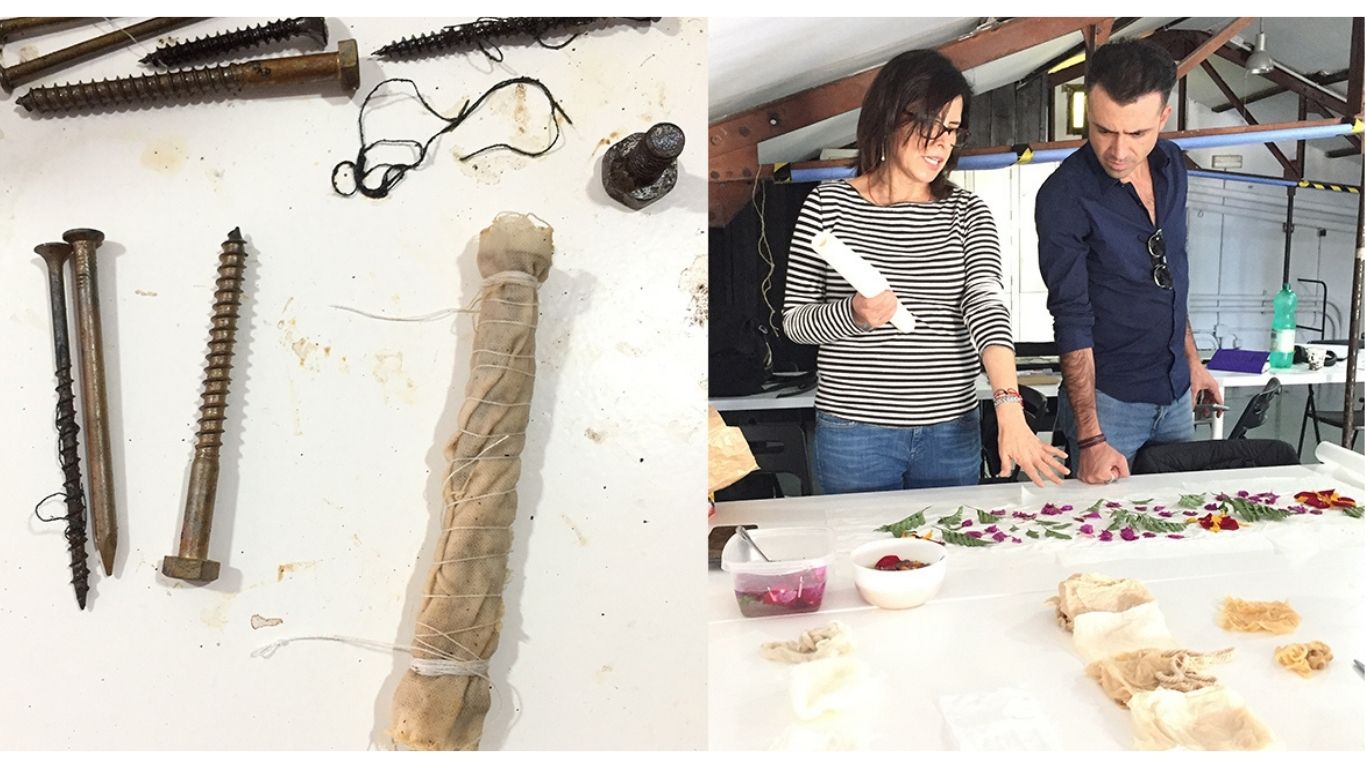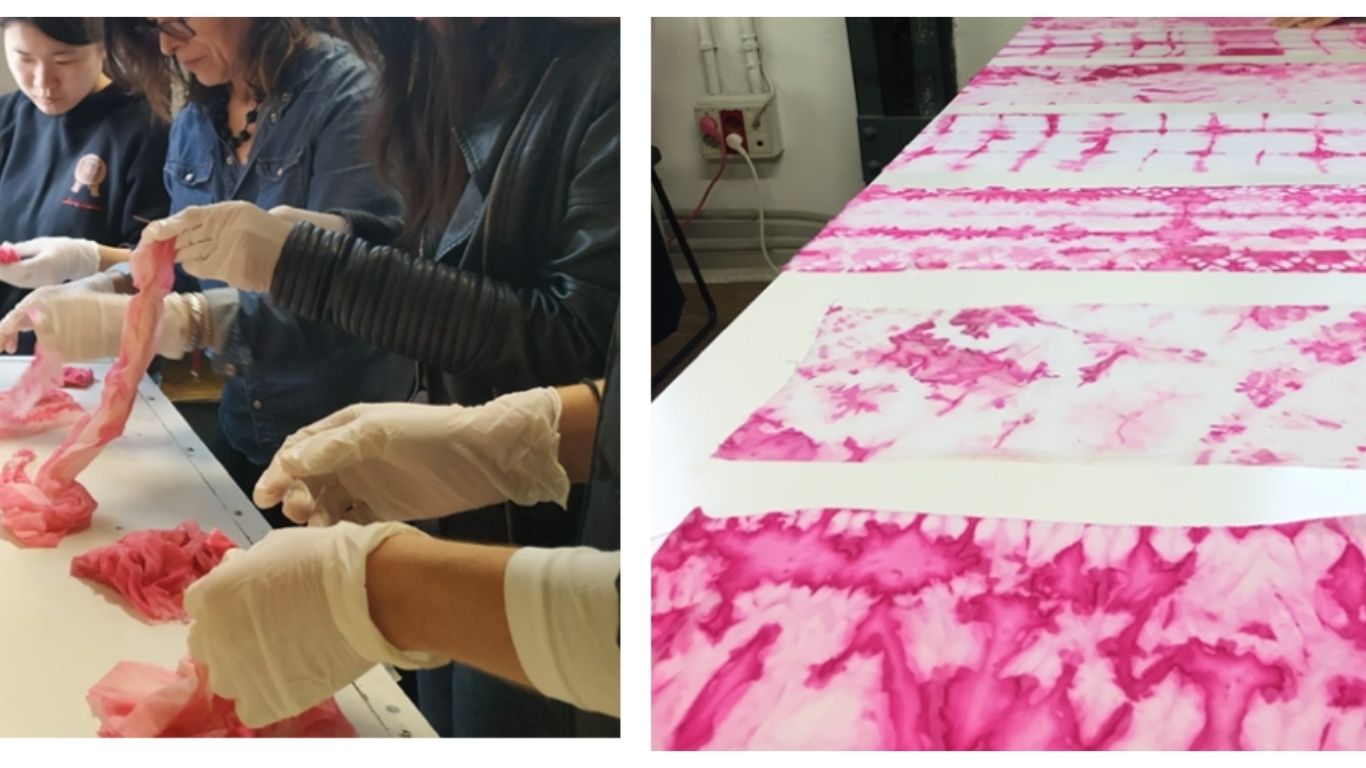4. Biochromes¶
The reduction of chemicals and water usage used by bioengineered dyes could be the ultimate game-changer¨ (Common Objective). On this week we learnt about traditional natural dyes, innovate techniques to give colors to our fabrics and dyeing with bacterias. All of these with the goal to reduced energy, water use and therefore carbon emissions. And in most of the cases reuse waste food. In conclusion, we explored different coloring alternatives ranging from plant based, insect base and bacteria based pigments.
”BioChromes is a naturally occurring substance which imparts colour to the tissues of plants or animals. Plants and animals commonly possess characteristic pigments. They range in plants from those that impart the brilliant hues of many fungi, through those that give rise to the various browns, reds, and greens of species that can synthesize their food from inorganic substances (autotrophs), to the colourful pigments found in the flowers of seed plants.”
Natural dyes and bacterias¶
Natural dyes options and process¶

On the class we used natural dyes and bacterial such roots, leaves and flowers. For example: madder, campeche, hibiscus, turmeric, achiote, weld plant, fruits, vegetables like onion peels, among others. It´s important, for extract the color, the use boiling water or just hot water.

Recommendation If dyeing vegetable fibers or natural fabrics such as cotton, linen, silk, or wool use water at 60 to 70° C). On the case of dyeing materials that contains more than 35% synthetic fibers such as polyester, acrylic, etc. Used water at 80° to 110°C.
 It is possible to use color modifiers for enhance the color, strength, and toughness. Some modifiers affect completely the PH of the dye and shift the color. Some options that you can use are 1) Acids: vinegar, lemon, and 2) base: sodium carbonate, 3) inorganic sal: alum (Potassium Aluminum Sulfate) 4) Alkaine; baking soda, baking powder, soda crystals, 5) Metallic salt modifiers: Iron, or aluminium (shift colors differently). I recommended to use natural and not harmful mordants.
It is possible to use color modifiers for enhance the color, strength, and toughness. Some modifiers affect completely the PH of the dye and shift the color. Some options that you can use are 1) Acids: vinegar, lemon, and 2) base: sodium carbonate, 3) inorganic sal: alum (Potassium Aluminum Sulfate) 4) Alkaine; baking soda, baking powder, soda crystals, 5) Metallic salt modifiers: Iron, or aluminium (shift colors differently). I recommended to use natural and not harmful mordants.

Method 1. Wet your naturally dyed linen beforehand 2. Pour water into a different container. 3. Combine 1 tsp. modifier with a tiny amount of cold water in a jar or pitcher and mix. 4. Place this solution and your fabric into the water container. 5. Take the fabric off once the color shifts. 6. Use a PH-neutral soap to rinse and wash.

In addition, seal your dyeing fabric you must use fixative/mordants. This process give the dye an affinity and improve the fastness of a dye. For example, some options are 1) alum & cream of tartar, 2) copper liquor - copper pipes + vinegar or in crystals form, 3) iron liquor rusty irons+vinegar or in crystals form, and 4) Na2Co3 (sodium carbonate).
Useful links¶
Mordanting Cotton With vs Without Tannin Program outline
Finally, stabilizer it is conservation technique called textile stabilization is used on fiber- and yarn-based fabrics with the goals of reducing damage, stopping deterioration, and maintaining structural integrity.

Biotextile Pantone¶
After all of us finished with the individuelle samples,Hinako,gathered all together and create a big bio-textile-pantone. Thanks Hinako!
 Photo by Gabriela Lotaif
Photo by Gabriela Lotaif
Bacterial dyes¶
Most of us don´t know that the bacterial dye is possible. Even me before this class. Biodegradable and environmentally benign colors made by some bacteria are safe for people, animals, and the environment. Toxic textile dyes may be substituted with bacterial dyes.

I experimented with the Bacteria SM or Serratia Mercescens. First, we tide our silk fabric using the shibori knot technique. Second, we prepared a biosafe workspace to start with the process of bacteria dyeing (like the photos above). Let´s remember that the bacteria is a living organism and should not get in direct contact with our skin. Let´s sure to clean well your workspace before and after the dyeing process.
Useful links¶
Benefits of bacteria dyeing¶
It has shown that using bacteria to dye rather than petrochemicals is a resource- and environmentally-friendly method of producing color, reducing CO2 emissions and avoiding costly combinations and materials like crude oil. Furthermore, bacteria can be kept as stems in labs and then multiplied at any moment. Making it use independent on seasons, weather conditions, and geography. They can be reproduced, storage and multiplied at any time in laboratories.

 Photo by Estefania Cavalie
Photo by Estefania Cavalie